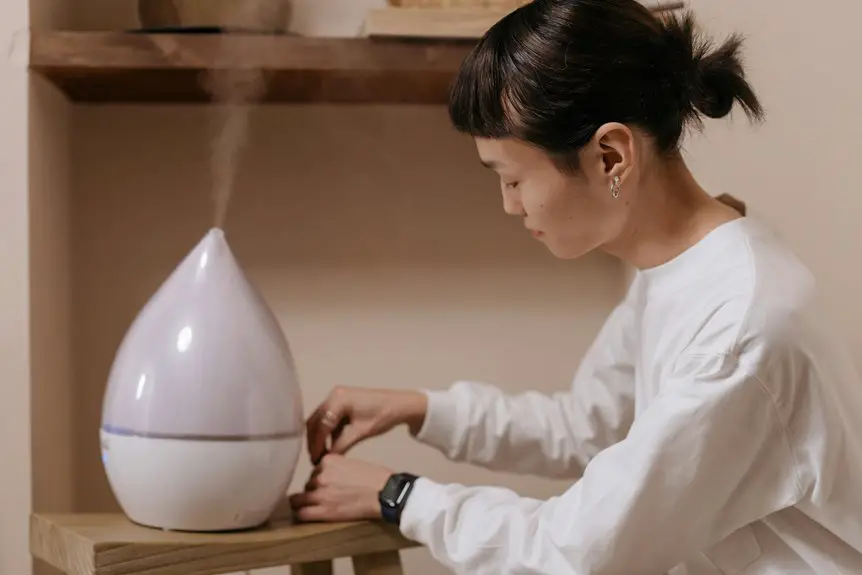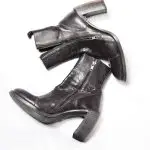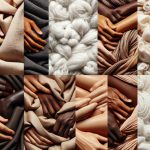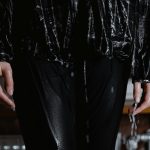You want clothes that breathe and fabrics that wick, but which truly matters more when it comes to comfort? Both play key roles in keeping you comfortable, yet they work differently—one manages airflow, the other handles sweat. Depending on your activity and environment, one might feel more essential than the other. Understanding how these features affect your comfort could change the way you choose your activewear.
Table of Contents
Key Takeaways
- Breathability allows air circulation, preventing overheating and keeping skin cool and dry for overall comfort.
- Moisture-wicking fabrics pull sweat away from the skin, reducing dampness and irritation during physical activity.
- Effective comfort relies on balancing breathability and moisture-wicking to regulate temperature and manage sweat.
- Fabric choice depends on activity intensity; low-intensity favors breathability, while high-intensity needs advanced moisture-wicking.
- Combining natural fibers’ softness with synthetic moisture management offers optimal comfort in various conditions.
Defining Breathability and Its Role in Comfort
Although you mightn’t always notice it, breathability plays an essential role in how comfortable your clothing feels.
When you wear breathable fabrics, air moves freely through the material, helping regulate your body temperature and prevent overheating. This happens because of the fabric construction, which creates tiny airflow channels that allow heat and moisture vapor to escape.
These channels guarantee fresh air circulates close to your skin, keeping you cool and dry without trapping sweat. If your clothing lacks these features, it can feel stuffy and uncomfortable, especially during physical activity or warm weather.
Exploring Moisture-Wicking and Its Benefits
Moisture-wicking fabrics actively pull sweat away from your skin to the fabric’s surface, where it can evaporate quickly. This fabric technology reduces moisture retention, keeping you dry and comfortable during physical activity or hot weather.
When you choose moisture-wicking materials, you benefit from:
- Faster drying times compared to regular fabrics
- Reduced risk of chafing and irritation
- Enhanced comfort by maintaining a dry feel
- Improved performance by managing sweat effectively
These fabrics use advanced fiber structures to channel moisture away, preventing it from clinging to your skin.
How Breathability Regulates Body Temperature
While moisture-wicking fabrics keep sweat off your skin, breathability plays a key role in managing your body temperature by allowing air to flow through the fabric.
This airflow supports one of your body’s primary thermoregulation methods: releasing heat through evaporation and convection. When air circulates freely, it helps cool your skin as sweat evaporates, maintaining effective temperature control.
Breathable materials prevent heat buildup, so you stay comfortable during physical activity or in warm environments. Without proper breathability, trapped heat raises your body temperature, making you feel hot and sticky.
Breathable fabrics keep heat from building up, ensuring comfort and preventing that hot, sticky feeling.
By choosing breathable fabrics, you enhance your body’s natural cooling system, ensuring consistent comfort and preventing overheating.
The Impact of Moisture-Wicking on Sweat Management
When sweat starts to build up during exercise, fabrics that pull moisture away from your skin can make a big difference in comfort.
Moisture-wicking materials speed up sweat evaporation, helping you stay dry and cool. This process is essential for effective temperature regulation, preventing overheating and discomfort.
Here’s why moisture-wicking matters for sweat management:
- Keeps skin dry by drawing sweat outward
- Enhances sweat evaporation to cool your body
- Prevents chafing caused by damp fabric
- Improves overall comfort during intense activity
Comparing Fabric Types for Breathability and Moisture-Wicking
Since different fabrics handle sweat and airflow in unique ways, choosing the right material can greatly affect your comfort during workouts.
Selecting the right fabric impacts how well you stay comfortable by managing sweat and airflow during exercise.
When comparing cotton vs. polyester, you’ll find cotton, a natural fabric, excels in breathability but tends to hold moisture, leaving you feeling damp.
Polyester, a synthetic fabric, shines in moisture-wicking, pulling sweat away from your skin to keep you dry, though it may not breathe as well.
Natural vs. synthetic materials each offer distinct benefits: natural fibers often feel softer and more breathable, while synthetics typically provide better moisture management and quicker drying.
Understanding these differences helps you pick fabrics that balance breathability and moisture-wicking to suit your needs, keeping you comfortable whether you’re sweating lightly or pushing hard.
Choosing the Right Fabric for Different Activities
You’ll want to pick fabrics that match the demands of your activity, whether it’s intense workouts or casual wear.
Finding the right balance between breathability and moisture-wicking can keep you comfortable and dry.
Let’s explore how different fabrics perform based on what you’re doing.
Activity-Specific Fabric Needs
Although breathability and moisture-wicking both play essential roles in fabric performance, the right choice depends on the activity you’re planning.
Different activities demand specific fabric types based on their intensity and environmental conditions. Here’s how to match fabrics to your activity intensity:
- Low-intensity activities like yoga benefit from breathable cotton blends that allow gentle airflow.
- Moderate-intensity workouts call for moisture-wicking synthetics such as polyester to keep sweat at bay.
- High-intensity training demands advanced moisture-wicking fabrics with enhanced ventilation to prevent overheating.
- Outdoor sports require fabrics combining breathability and moisture management to handle variable weather.
Balancing Breathability and Wicking
When choosing fabrics for your workouts, striking the right balance between breathability and moisture-wicking can make all the difference in comfort and performance. Modern fabric technology blends these comfort factors to suit different activities, ensuring you stay dry without overheating. For high-intensity workouts, prioritize moisture-wicking materials that pull sweat away quickly. For low-impact or outdoor activities, breathable fabrics help regulate temperature.
| Activity Type | Breathability Level | Moisture-Wicking Level |
|---|---|---|
| Running | Medium | High |
| Yoga | High | Medium |
| Hiking | High | Medium |
Choosing the right fabric means considering both breathability and wicking to match your activity’s demands and keep you comfortable throughout.
Combining Breathability and Moisture-Wicking for Optimal Comfort
Since comfort depends on managing both airflow and moisture, combining breathability with moisture-wicking technology gives you the best of both worlds.
You can stay dry and cool by choosing the right fabric blends and using smart layering techniques. Here’s how to optimize comfort:
- Pick fabrics that balance moisture-wicking and ventilation, like polyester-cotton blends.
- Use layering techniques—start with a moisture-wicking base layer and add breathable mid-layers.
- Look for garments with mesh panels or ventilation zones to boost airflow without sacrificing moisture control.
- Avoid heavy, non-breathable materials that trap sweat and heat.
Frequently Asked Questions
How Do Washing and Drying Affect Breathability and Moisture-Wicking?
You’ll find washing techniques like gentle cycles help maintain your fabric’s breathability, while harsh detergents can damage moisture-wicking fibers. Drying methods matter too—air drying preserves function, but high heat can reduce both breathability and wicking.
Are There Environmental Impacts of Producing Moisture-Wicking Fabrics?
Imagine a garden where every plant’s growth affects the soil. You’ll find moisture-wicking fabrics impact the environment through production processes, but by choosing sustainable practices, you can help nurture that garden instead of depleting it.
Can Breathability or Moisture-Wicking Cause Skin Irritation?
If you have skin sensitivity, certain fabric compositions in moisture-wicking or breathable materials might irritate your skin. Always check fabric types and test new clothes to avoid discomfort or allergic reactions during wear.
How Do Fabric Blends Influence Long-Term Durability?
Imagine fabric longevity as a sturdy bridge; blend composition acts as its materials. You’ll find that combining fibers cleverly boosts durability, so your clothes last longer without sacrificing comfort or performance over time.
Do These Fabrics Affect Odor Control Differently?
You’ll find that fabrics with proper treatment reduce odor retention better, while untreated blends may trap smells. Choosing materials with odor-control fabric treatment helps keep you fresher longer and improves overall comfort during wear.
- Tetron Fabric for Marine Applications: Durability and Use Cases - June 18, 2025
- Tetron Fabric for Outdoor Furniture: Weather Resistance and Care - June 18, 2025
- Tetron Fabric for Wall Coverings: Style and Application Tips - June 18, 2025







